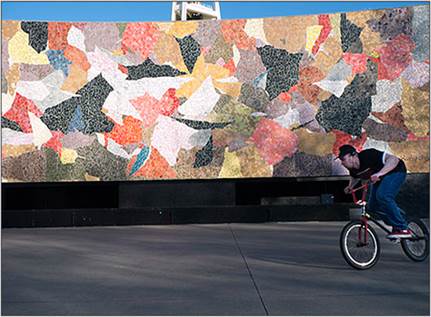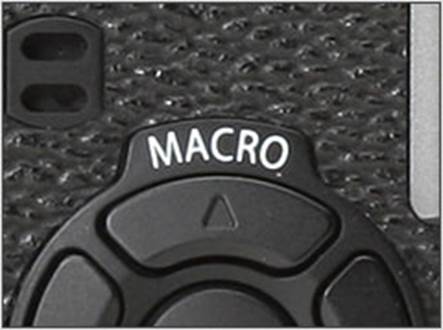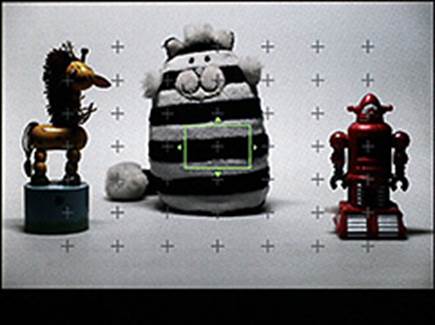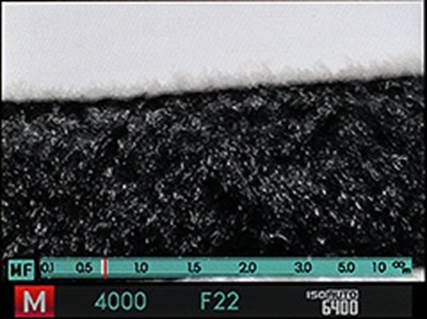Performance
Continuous
Shooting
It's certainly not a speed demon but it is
great that the X-E1 can be horrifying with 6 frames per second if you want to
record the action. The shooting chain though is not fully consistent, usually
begins slowly and speeds up after the first two or three shots. A three-frame-per-second
is also available if you do not want to take too many pictures. Carefully,
though, you are shooting in continuous shooting settings of X-E1, you cannot
see directly - instead, you'll see a quick slideshow of the shots you have just
taken. This makes accurate panning extremely difficult, if you're shooting
moving subjects.
When taking a few beams, the buffer zone
can fill quickly and need a long time to delete, especially when shooting RAW +
JPEG, so investing in a fast memory card is required. Using a Class 6 SDHC card
makes waiting between the beams a chore, but switching to a SanDisk Extreme
Class 10 UHS-1 Class improves matters. Even so, it takes 40 seconds to delete a
single beam of 11 frames.
Focus is set in the first image, so you
have to locate yourself close to perpendicular to the action and set the
aperture between F5.6 and 8 to increase the depth of field to cover most of the
subjects if sharp focus is very important.

Frame
1- Frame 2 - Frame 3 - Frame 4 - Frame 5 - Frame 6
Viewing your files on the computer can be
quite disorienting, because every image you shoot in continuous mode has a
different name compared to all other images. Instead of starting with the
letter D, the filenames start with the letter S, which ranks them to the bottom
of the list.
In playback mode, the first image appears
on the full frame, with a small animation of the rest of the chain displaying
in the lower right corner. Pressing the down arrow allows you to slide over
each image full-screen at the same time.
Focus
According to Fujifilm, the X-E1 offers
significantly improved focus when compared to the X-Pro1, both in automatic and
manual focus modes. Software version 2 for the X-Pro1 brings the same
improvements for the old cameras - particularly, low- light AF should be
improved, and focus speed should be definitely better with the XF 60mm F2.4 R
Macro lens.
Autofocus
In fact, the X-E1’s autofocus system has
capacity most of the time, but it is not always the fastest. Although you can
quickly choose the AF point, and even adjust its size, the system frequently
freezes up in low light, which is a shame since the image quality is concerned;
the X- E1’s performance in low light at high ISO is amazing. It is a shame when
the AF system cannot always keep up.
Still in good light, the AF system of the
X-E1 has quick and reasonable response, depending on the lens being used, and
compares well with the competitive mirrorless cameras in every day capturing.

Turn
on the multi-point AF

When
conveying the X-E1 to friends, we often switched on multi-point AF, but let us
capture, it was easier to use the arrow keys to choose among the 49 AF points
on the screen. In autofocus mode, the AF point size is adjusted with five sizes
available with a rotating cycle of the rear dial.
The newest 18-55mm lens seems to focus
fastest, while my favorite 35mm lens is the slowest. The 60mm focuses rather
quickly when the camera predicts accurately, but its long throw creates quite a
delay when it gains focus.
As for the pride of the Fujifilm that the
X-E1 competes with the autofocus system of the E-M5, from our testing, it seems
to be an optimistic announce. Using two cameras side-by-side, when the X-E1 has
the best performance, especially with the 18-55mm lens attached; it works very
well, but we are still left a strong impression on it again in general with the
speed of the E-M5 when compared. The X-E1 is fast, but the E-M5 is faster and
more accurate, with fewer missing-focused shots. In general, however when
paired with the 18-55mm kit zoom, the performance of the X-E1 is fairly good.
Focus speed is not too hot with a fixed lens attached, but on overview, we are
quite confident that the X-E1 exceeds beyond the X-Pro1 with initial software.
With current software is installed, the X-E1 and X-Pro are in the same
effective range.
Macro focus mode
As the X-E1 lacks an optical viewfinder,
its Macro button works less than the X-Pro1’s, simply allowing the lens to
focus closer, while the X-Pro1 needs this button to change to the electronic
viewfinder to avoid significant errors generated by the optical viewfinder. It
should be noted that the macro mode of the X-E1 works with the original XF
fixed lens. With the new 18-55mm kit zoom lens, and the 14mm fixed lens (both
can focus very close without editing) it has no impact on the minimum focusing
distance.

The
Macro button on the rear of the X-E1 is used for close focus operation with original
three XF fixed lenses. It seems that then you have to press the Right Key + OK
button to change the mode, but actually pressing a macro button for a second
also works well.
This means that you are able to easily
switch to the Macre mode with a quick double-press of the button.
Focusing in macro mode, as we’d expect, is
much slower than when shooting objects at longer distances, and you seem to
experience more focus hunting, particularly when capturing with the 60mm fixed
macro lens. That showed that focus is generally very accurate, assuming that
all subjects have enough contrast for the AF system of the camera to
"bite" onto.
Manual focus
Sliding the front switch button to Manual
focus mode allows you to set the focus via the electronic ring on the lens.
Depending on the lens it can take a long time and a lot of variables to move
from one end of the available focus range to the other, but a press of the
AF-Lock button enables the AF system that allows you to reach nearer right over
the falling point. Pressing the rear rotating button inward enables the check
Focus option, which allows magnifying you on the selected AF point. All operate
very fast once you get used to it.

In
manual focus mode, you can select the area where you want to focus...

...and
a magnified interface that is easy to use allows you to see exactly what you
are doing. The focus distance measure is cute, but not so useful for close-ups
Manual focus mode is certainly improved
over the first software version of the X100 and the X-Pro1, but focusing from a
distance is always difficult to master. Because the camera defaults to focusing
at its maximum aperture, you can feel more confident about focus than in the
past, and the magnified interface supplies you with quite a precise reappearance
of what will be focused and what won’t. The movement of the focusing factor
when you rotate the focus ring is nice and fluid rather than dry and erratic -
this is good, and not always the case in the focus of the remote systems. The
magnified viewing function can help.